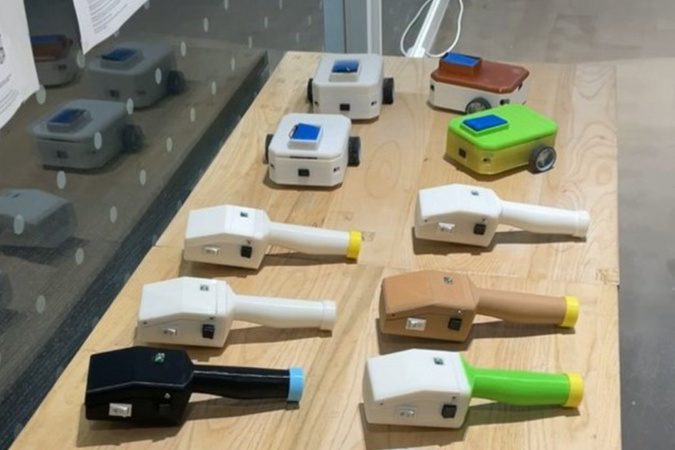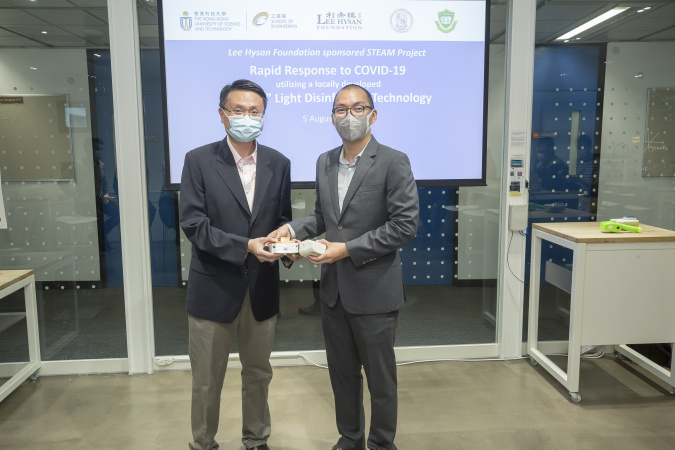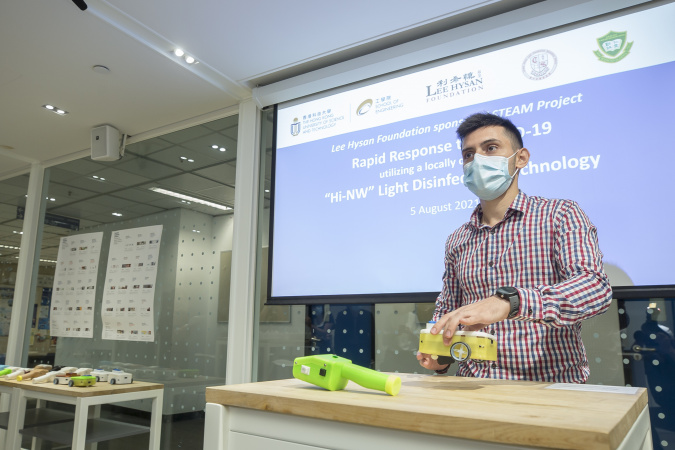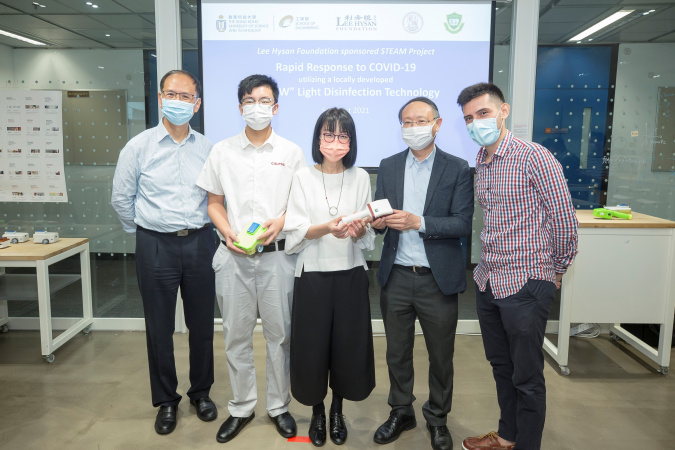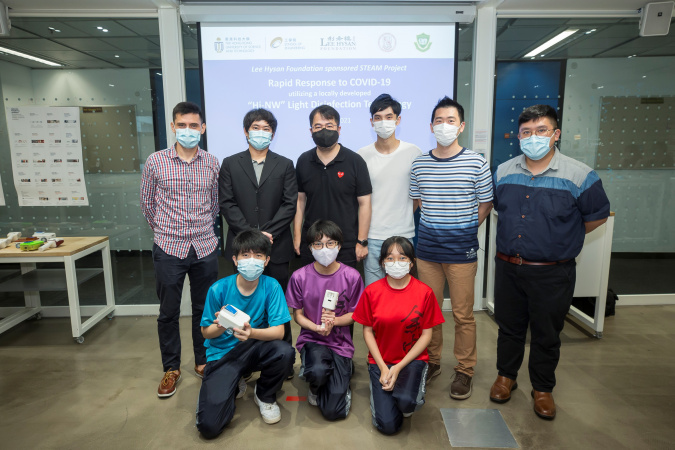High School Students Built HKUST’s Patented Hi-NW Light Disinfection Devices to Benefit the Community
A HKUST Engineering STEAM education initiative utilizing the patented Hi-NW light-based disinfection technology developed by Prof. YEUNG King Lun has contributed in assisting the community to fight COVID-19, in addition to nurturing curiosity and creativity in our future engineering talents by providing them with hands-on learning experience.
Sponsored by Lee Hysan Foundation, the project started in May 2020 and concluded with a ceremony at HKUST on August 5, 2021. Under the guidance of HKUST’s professors and students, 15 students from Carmel Alison Lam Foundation Secondary School and Lok Sin Tong Yu Kan Hing Secondary School successfully fabricated 15 light disinfection devices that will be deployed in elderly homes and community centers.
The devices utilize the novel high-intensity, narrow wavelength (Hi-NW) light-based disinfection technology developed by Prof. YEUNG King Lun of the Department of Chemical & Biological Engineering and Division of Environment & Sustainability, and have been proven to rapidly disinfect various surfaces and objects including bed, carpet, table, and floor. Compared with UV light, the Hi-NW technology is 60% more effective in terms of speed, safety, and cleanliness and uses only a tenth of energy, making it a sustainable technology.
Over the past 15 months, while coping with the difficult situation created by the pandemic, students of the two schools attended online and in-person workshops delivered by HKUST professors and students to learn about 3D modeling, coding, aseptic techniques, safety precautions, and to build and fabricate the devices. They also visited the beneficiary NGOs to collect staff’s feedback on how to improve the device in its actual use.
Their hard work has culminated in 15 disinfection devices (10 handheld ones and five autonomous ones) – all of which have recently passed the quality and safety tests at HKUST. The device is simple to use, safe, and effective. It is operated by rechargeable batteries, and can run continuously for six hours (for handheld) and an hour (for autonomous) after a single recharge.
The project would not be possible without the ardent support of Lee Hysan Foundation, which shares the same mission with HKUST to give back to the community and nurture the young generation. Mr. Clifford CHOW, Vice President of Lee Hysan Foundation, said in the ceremony, “It is exhilarating to see the students’ final products, which will bring great help to frontline workers of NGOs. On behalf of the Foundation, I would like to thank everyone who is involved in this meaningful project. Despite the additional challenges of COVID-19 restrictions, everyone has shown great flexibility and put in a lot of effort to make this project a resounding success. To the high school students, I hope the experience in this project will inspire you to develop your future in the field of engineering and technology.”
Prof. Yeung, who leads the project, said, “I am grateful to Lee Hysan Foundation for making this happen. For the students, I congratulate you for achieving this finally, as it has not been an easy year adapting to the pandemic situation. I hope that you will pass the baton to the younger students in your school – not just about the technology and skills you have learned, but also the essence of contributing to the community.” Prof. Yeung is also the inventor of the MAP-1 smart antimicrobial coating that has seen large-scale adoption as a frontline tool against COVID-19. It has been used in diverse premises in the city since early 2020, including the disinfection of over 1,000 caged home units and sub-divided flats under the sponsorship of Lee Hysan Foundation in April last year.
At the ceremony, student representatives of the two participating schools expressed their gratitude to the Foundation and HKUST. Through the project, they had the opportunity to gain hands-on experience in new areas outside their school curriculum, for example 3D printing and welding, and to have a taste of a new mode of learning at university. They believe the device will serve as a convenient tool to help the underprivileged in reducing their workload and pressure on cleaning amid the pandemic. They also thought such experience would pave the way for their greater exposure to the field of engineering.
